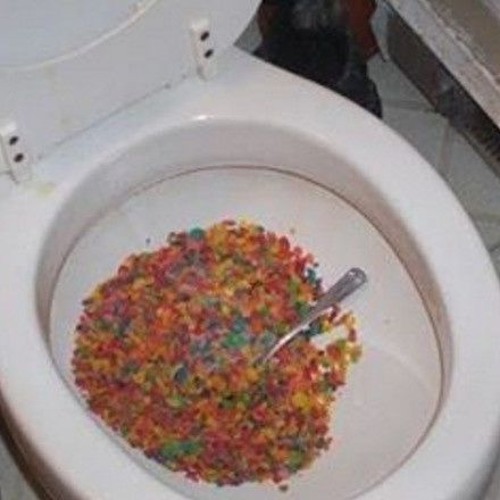Is it Sensible to Dispose of Food in the Toilet?
Is it Sensible to Dispose of Food in the Toilet?
Blog Article
What are your opinions on Think Twice Before Flushing Food Down Your Toilet?

Introduction
Many individuals are frequently faced with the issue of what to do with food waste, specifically when it comes to leftovers or scraps. One usual concern that occurs is whether it's okay to flush food down the commode. In this post, we'll explore the reasons why people may think about flushing food, the effects of doing so, and different techniques for proper disposal.
Reasons individuals might think about flushing food
Absence of understanding
Some individuals might not recognize the prospective harm caused by flushing food down the toilet. They might incorrectly believe that it's a harmless method.
Ease
Flushing food down the commode might appear like a fast and very easy option to disposing of undesirable scraps, particularly when there's no neighboring trash bin readily available.
Negligence
Sometimes, people may merely select to flush food out of sheer idleness, without thinking about the repercussions of their activities.
Effects of flushing food down the commode
Environmental impact
Food waste that winds up in waterways can contribute to air pollution and injury water ecosystems. Furthermore, the water used to flush food can stress water resources.
Pipes issues
Purging food can lead to blocked pipelines and drains, triggering pricey plumbing fixings and troubles.
Kinds of food that must not be flushed
Fibrous foods
Foods with coarse structures such as celery or corn husks can get tangled in pipelines and trigger obstructions.
Starchy foods
Starchy foods like pasta and rice can soak up water and swell, bring about obstructions in pipes.
Oils and fats
Greasy foods like bacon or food preparation oils must never ever be flushed down the commode as they can solidify and trigger clogs.
Proper disposal approaches for food waste
Using a garbage disposal
For homes geared up with waste disposal unit, food scraps can be ground up and purged via the pipes system. However, not all foods are suitable for disposal in this way.
Recycling
Specific food product packaging materials can be recycled, decreasing waste and decreasing ecological influence.
Composting
Composting is an environment-friendly method to take care of food waste. Organic materials can be composted and used to enrich soil for gardening.
The significance of appropriate waste monitoring
Lowering environmental injury
Proper waste monitoring practices, such as composting and recycling, aid reduce contamination and maintain natural deposits for future generations.
Securing pipes systems
By avoiding the technique of flushing food down the bathroom, home owners can prevent costly plumbing repair services and keep the integrity of their pipes systems.
Final thought
Finally, while it may be appealing to flush food down the bathroom for convenience, it's important to understand the potential consequences of this activity. By embracing proper waste management techniques and getting rid of food waste responsibly, people can add to much healthier plumbing systems and a cleaner atmosphere for all.
FLUSH FOOD DOWN THE TOILET?
FLUSHING FOOD CAN CAUSE BLOCKED DRAINS IN YOUR HOME
All of the plumbing fixtures in your home are connected to the same sewer pipe outside of your home. This outdoor sewer pipe is responsible for transporting all the wastewater from your home to the Council sewer mains. Even small pieces of food that go down the kitchen sink can cause problems for your sewer. It should therefore be obvious that flushing larger bits of food, such as meat, risks a clog in either the toilet itself or the sewer pipes. Flushing greasy food is even more problematic because oil coagulates when it cools, coating the interior lining of your pipes.
THE TOILET IS NOT A BIN
Food isn’t the only thing that people shouldn’t be flushing down the toilet. People use the toilet to dispose of all kinds of things such as tampons, makeup wipes, dental floss, kitty litter and even underwear. Water goes to great lengths to educate residents about the high costs and stress placed on wastewater treatment systems simply from people flushing the wrong stuff down the toilet. It costs taxpayers millions of dollars each year, and homeowners thousands in blocked drain repairs.
FLUSHING FOOD IS A WASTE OF WATER
Flushing food is a waste of our most precious resource - water. In June this year Level 1 water restrictions were introduced to protect water supply from drought conditions. Much of New South Wales continues to be affected by prolonged drought with recent figures revealing up to 97 per cent of the state remains in drought. Depending on whether you have a single or dual flush toilet, every single flush uses between five and 11 litres of water. In the current climate this is a huge amount of water to be wasting on flushing food that should be placed in the bin (or better yet, the compost).
https://www.jabplumbingsolutions.com.au/blog/can-you-flush-food-down-the-toilet

I was made aware of that editorial about Flushing Food Down the Toilet? through an associate on another site. Sharing is caring. Who knows, you may very well be helping someone out. I appreciate your readership.
Check This Out Report this page